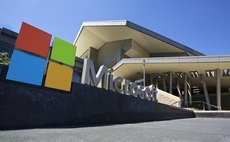Robots and SQL and apps, oh my
Microsoft delivered a blinder of a keynote at Build in San Francisco today, covering as technically diverse topics as SQL data warehousing, native iOS application development in Visual Studio and s...
To continue reading this article...
Join Computing
- Unlimited access to real-time news, analysis and opinion from the technology industry
- Receive important and breaking news in our daily newsletter
- Be the first to hear about our events and awards programmes
- Join live member only interviews with IT leaders at the ‘IT Lounge’; your chance to ask your burning tech questions and have them answered
- Access to the Computing Delta hub providing market intelligence and research
- Receive our members-only newsletter with exclusive opinion pieces from senior IT Leaders























